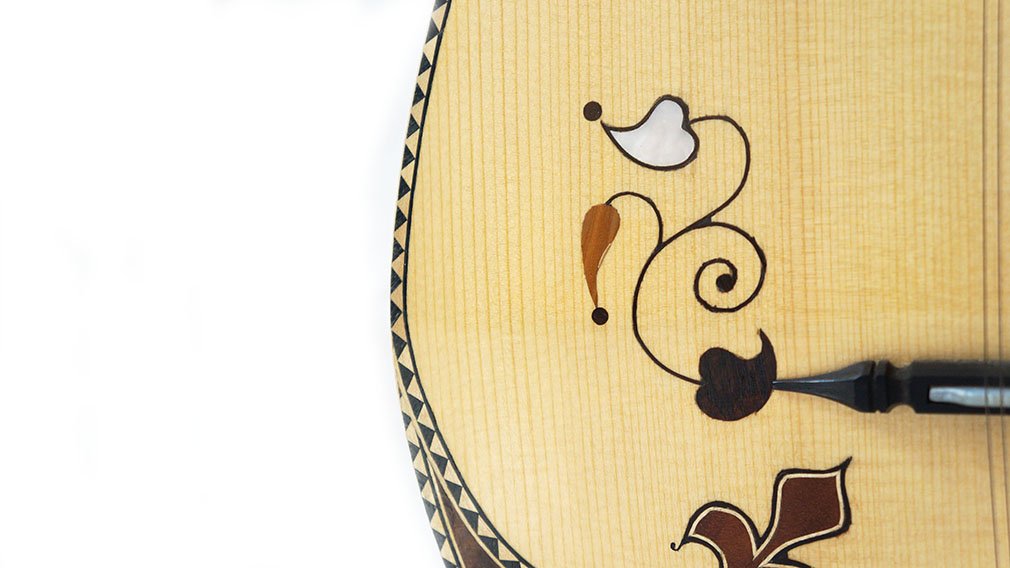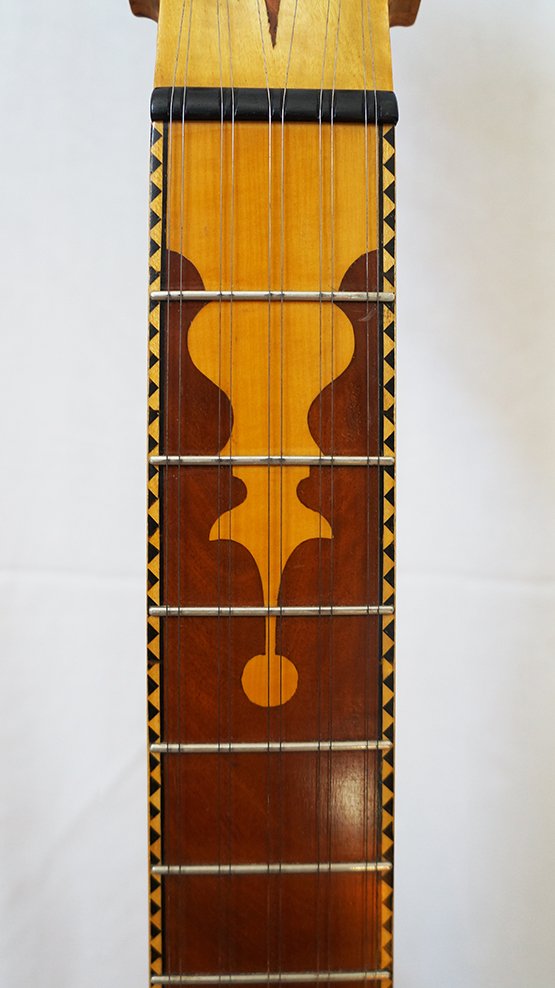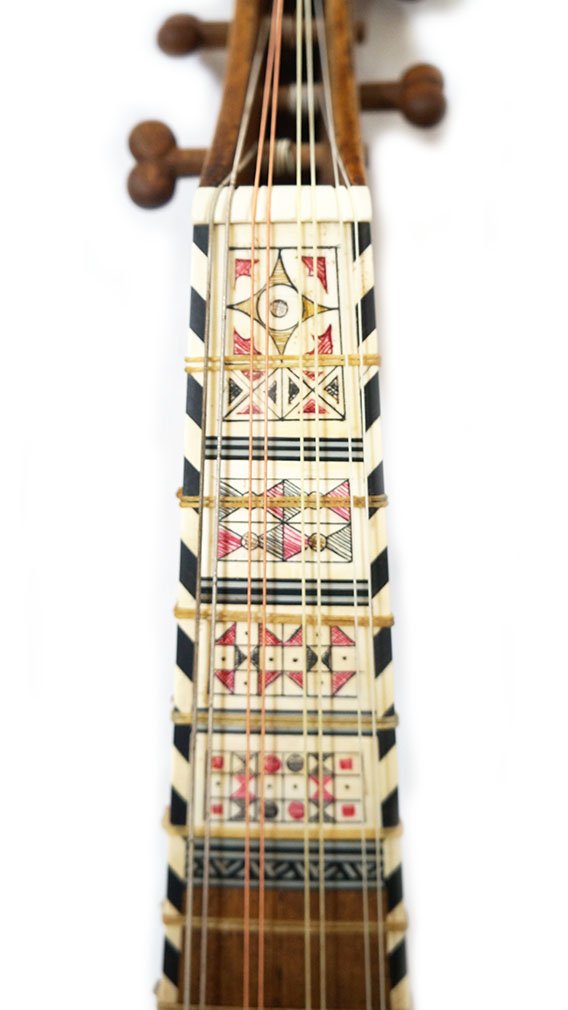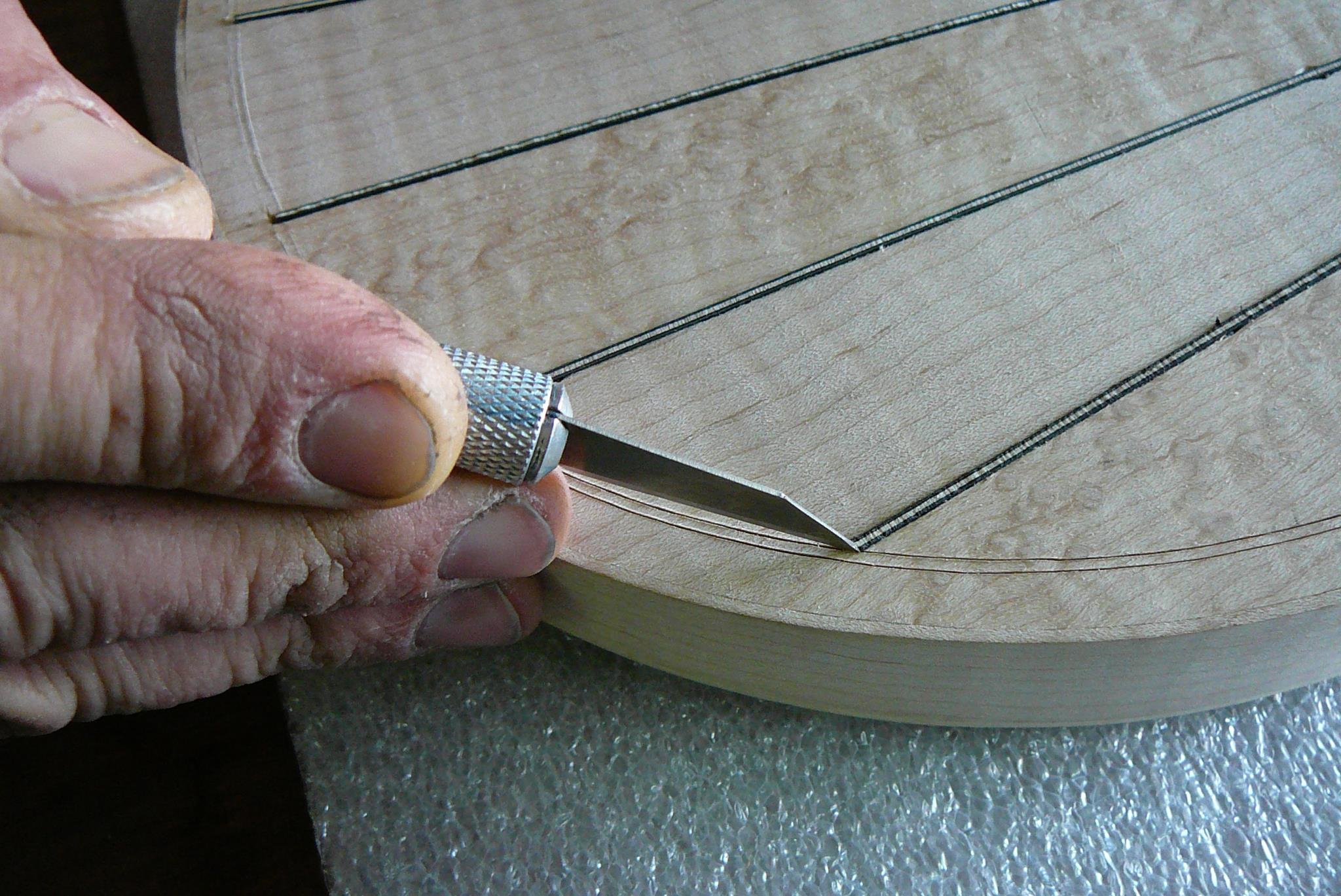
awakened muse
by Victoria Thomas
Our destiny, our nature, and our home,
Is with infinitude -- and only there.
William Wordsworth
The sublime creates a sense of delight rather than mere pleasure, arising from a sense of relief. The sublime is associated with pain, danger and anxiety, the experience of exultation when we realize that we have overcome these challenges. An example is viewing the Grand Canyon. Our visceral response is fear, realizing the depth and height to which we are witness. But then realizing that we are safe, even as we stand on the crumbling. sandy edge of disaster, we feel giddy. This survivor’s giddiness is one form of the sublime.
This sense of facing the impossible is what makes the artistry of Antonio Dattis sublime. He has devoted his life to the taming of a medium of resistance: wood. Dattis is a master luthier, a maker of exquisite wooden stringed instruments. Often, he works from notoriously unreliable drawings and paintings dating from the 1200s forward. And usually, given the antiquity of the originals, he has no way of truly knowing exactly how the finished instrument should sound, eight centuries later.
From Nicolas Boileu to Immanuel Kant, from Coleridge to Dickinson, defining the experience of the sublime has obsessed poets, philosophers and literary critics for decades. The general consensus is that while beauty is a matter of smoothness, proportion and gradation, the sublime is not. It’s more.



Soolip caught up with Dattis in his workshop in Sava, Puglia, located in Italy’s heel. The artist lives in a house built in 1870, with his wife, two dogs, and his own collection of rare and reproduction instruments. He remains unruffled by the technical demands of the work, saying “Nothing is difficult when you do it with love and passion. It is really my need to produce art. It is something that comes naturally to me, every new job is a challenge with yourself, a growth, a rebirth.” As for his own musical tastes: “Tutti” (all). He listens to ancient music, classical, contemporary, rock and jazz as he works.
His copies of medieval and Renaissance lutes, citoles, guitars, mandolins, violincellos and other instruments look fanciful when compared to their more streamlined modern equivalents. Many of the pieces created by Dattis bear traces of a common Arabian heritage. Indeed, the English word “lute” arises from a corruption of the Arabic word for what was considered “the Sultan” of stringed instruments, al-‘ud, the oud, simply meaning “of wood.” Oud or Oudh may be familiar today to lovers of fine fragrances, where the essential oil called Oud is extracted from the agar tree. The pungent, sticky resin has been reported by Forbes and others to command up to $5,000 per pound.




The exceptional mercenary scope of Arab traders in the ancient world through the Renaissance provided a rich supply of precious materials to artists and craftspeople: Lebanese cedar, Indian rosewood, African ebony, mother-of-pearl, metals, glass, gemstones, slices of tortoise-shell, faience, bone and ivory. The rosettes or sound holes of original stringed instruments from the Muslim world often bore inlaid calligraphic inscriptions from the Qur’an, sanctifying the instrument as the voice of the Prophet. For export to Europe, Arab artisans replaced the verses with abstract geometric shapes which nonetheless held the scriptural messages in coded form.
The artist comments, “The research of materials is challenging now, especially in recent years with the restrictions and protection of many varieties of woods. There are specialized dealers who supply wood for violin making that can come from all over the world.” The agar tree is among these, now considered a threatened species in its native South Asia.
Intarsia, veneers, inlay work, marquetry and mosaic techniques have been related decorative art forms from the beginning of recorded history. An early example is a royal casket from Ur, Mesopotamia dating from 2600 BCE, where tiny pieces of ivory are inlaid into the wooden form. Fabulously inlaid chairs and chests were also treasures entombed with several Pharaohs. In the Odyssey, circa 700 BCE, Homer describes the bedframe made by the hero for his long-suffering bride Penelope as “…fair with inlaid work of gold, silver and ivory.” Around the 11th century, these skills reached Sorrento, Sienna, and other parts of Italy, evidenced by their spectacular application in cathedrals, churches, monasteries, and many centuries’ worth of public monuments and civic buildings across Europe and indeed around the world.
Dattis is commissioned by individuals (musicians and collectors) and museums to create his instruments and explains that they are never merely decorative: “An instrument is made to play, so they are used regularly, some a little less, others daily.” When possible, he travels to museum sites to take measurements and reliefs of an existing original. These originals often are in fragile pieces, leaving Dattis to imagine the whole instrument and its sound in its entirety from ancient fragments, long silent and all but forgotten.
This Italian master is disarmingly humble, explaining that curiosity drives him not only to create, but to continuously compare his work to that of others, always refining and pushing his knowledge out to that raw, crumbling, precarious edge where hawks wheel, and where the view is the most thrilling.
But why? A shrug, and this: “Le grandi domande non hanno riposte.” The big questions have no answers.
All photos courtesy of the artist.




